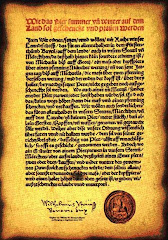
When you talk to someone about wine, certain items always get top billing: Terroir, grape variety, who the winemaker is, what style of wine is produced, how the grapes are pressed, etc. One topic that rarely makes its appearance is : Yeast. Imagine that. Here we have the very item that is essential for fermentation to occur. Yet most of us rarely, if ever, think about how yeast affects the process itself, what flavors the yeast adds to the wine, and how far the yeast can go in creating the final product. For example: Zins are often more than 15% ABV. This takes a certain type of yeast as most strains are dead when the wine goes past 14.5% ABV.
In the world of Sherry, the FLOR that creates the sometimes years long second fermentation, leaves a taste profile that, once tasted, can rarely be forgotten. In the world of beer, yeast strains used for wheat beers often have a nose of bananas and other tropical fruits. Often the flavors are there as well as the aromas. Imagine, a beer having a tropical profile because of the yeast strain.
Researchers in New Zealand are involved in a years long project in order to learn what exactly it is that contributes to the unique aromas and flavors of New Zealand’s most famous wine, Sauvignon Blanc. Many aspects are under investigation including how to analyze what the flavor components are, canopy management,how to best use information about flavor profiles when making the wine, and, of course, what yeast strains produce the different “flavors and aromas” inherent in Sauvignon Blanc from New Zealand.
Imagine, if you will, being a winemaker. You have a vineyard and produce much wine. It may be possible to vinify several different styles of wine from the same vineyard by using different strains of yeast for the fermentation. If this can be done for SB, can it also be done for other varietals? If so, can ,say, nuance of Bordeaux reds be introduced to Cabernets or Merlots from California or Chile? Can new world producers isolate some yeast strains that will duplicate the taste of yeasts in use in Champagne to create an identical profile? After all, terroir encompasses non-man made conditions in the making of wine. Is yeast considered a part of a wine’s terroir if wild yeasts are used?
Remember, the science behind vinification is quite young. It was not until the mid 1980s that malo-lactic fermentation was identified and scientifically described. What other discoveries are waiting for us?
Exciting stuff.





No comments:
Post a Comment